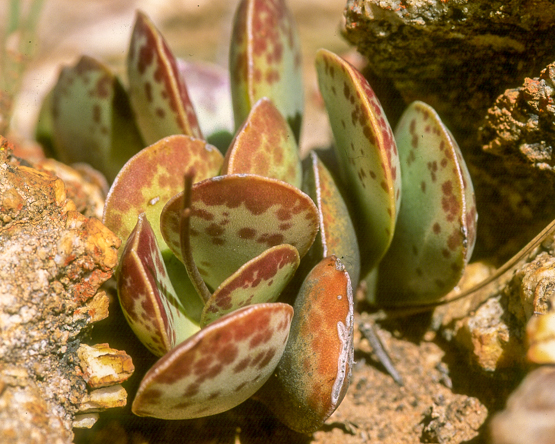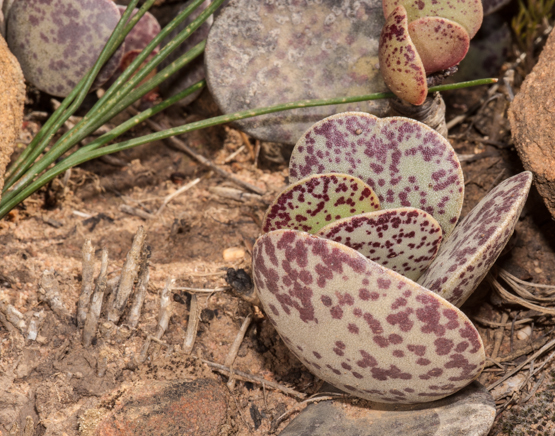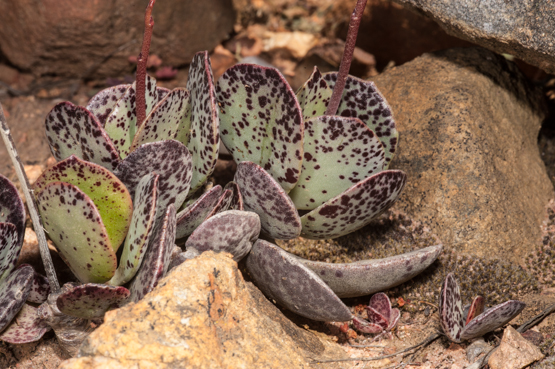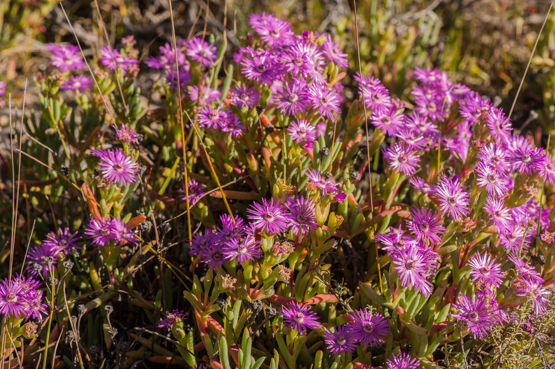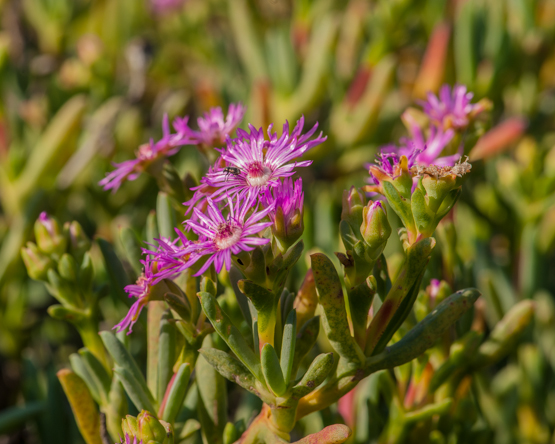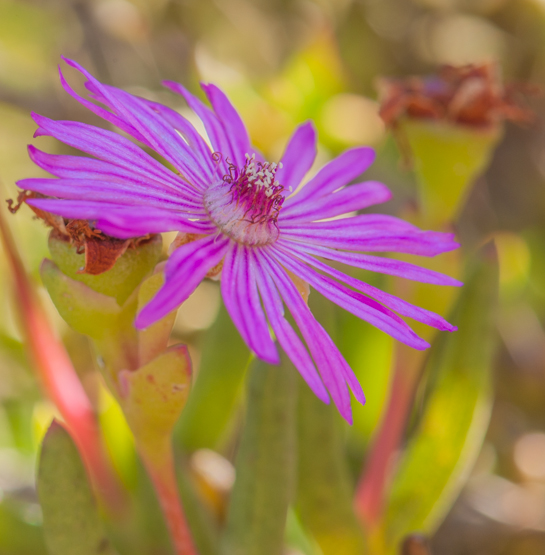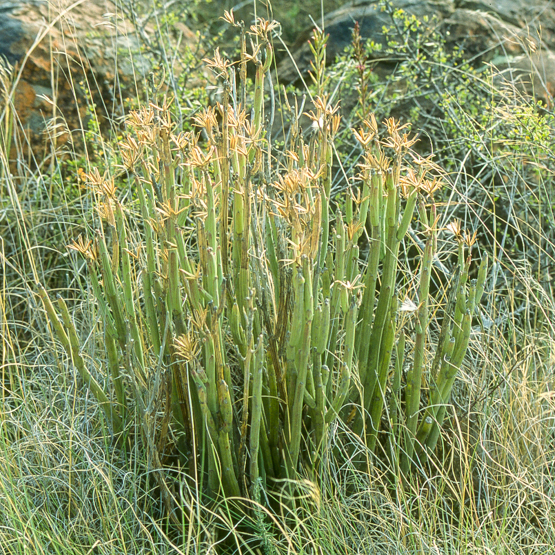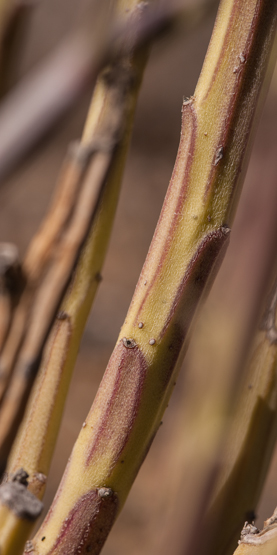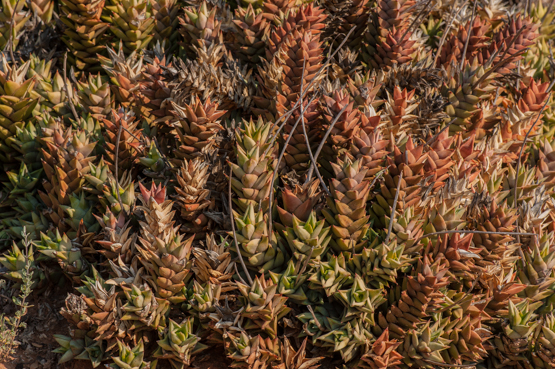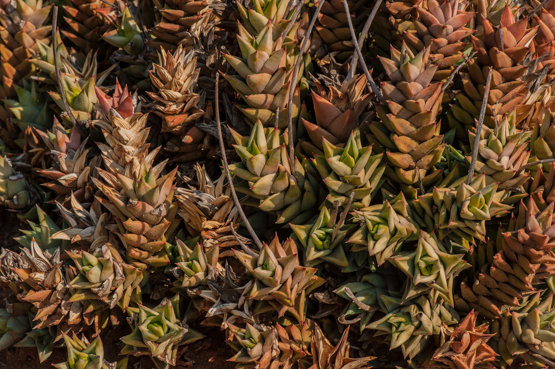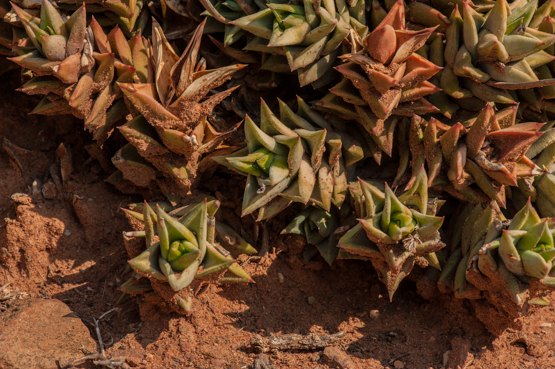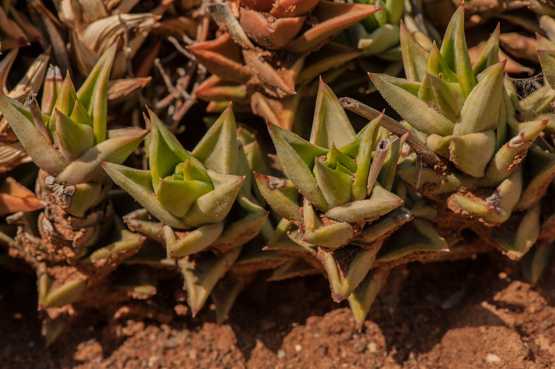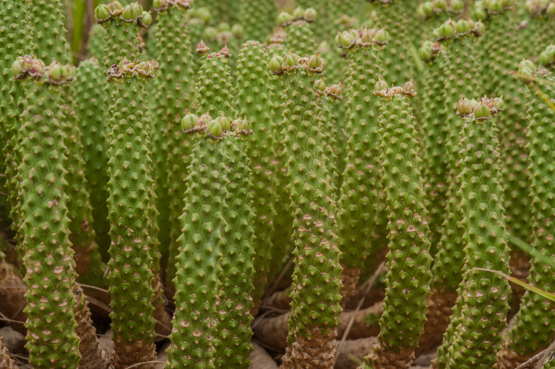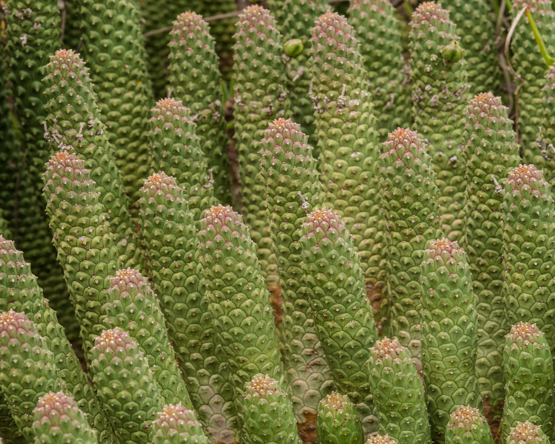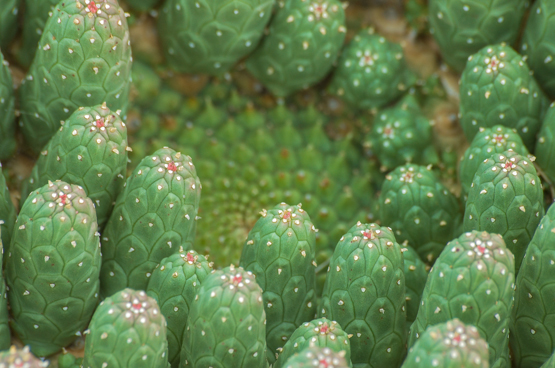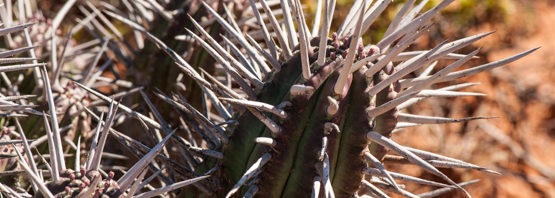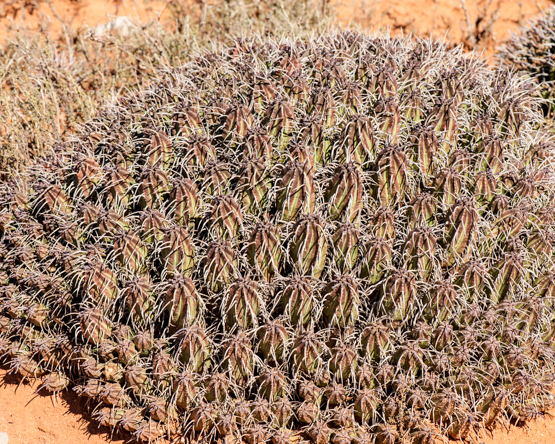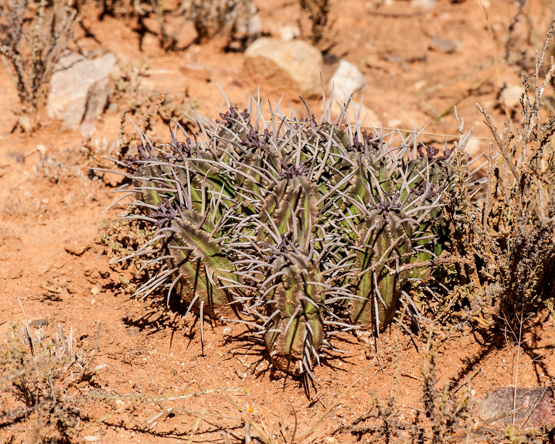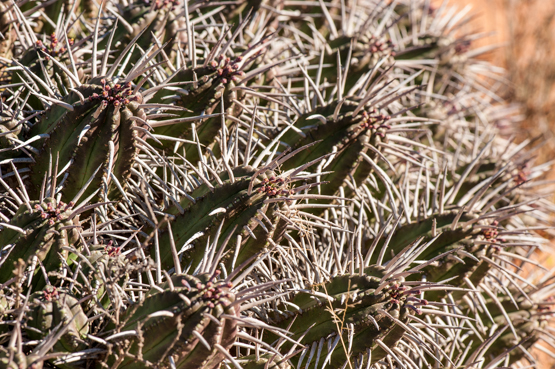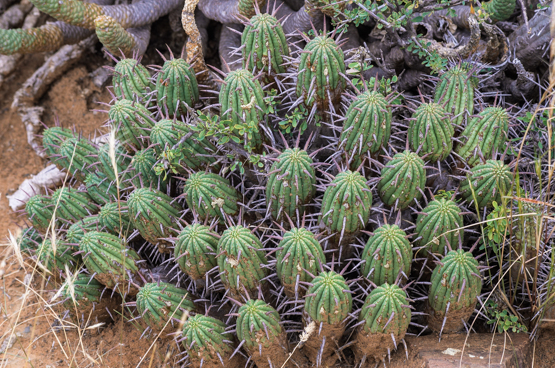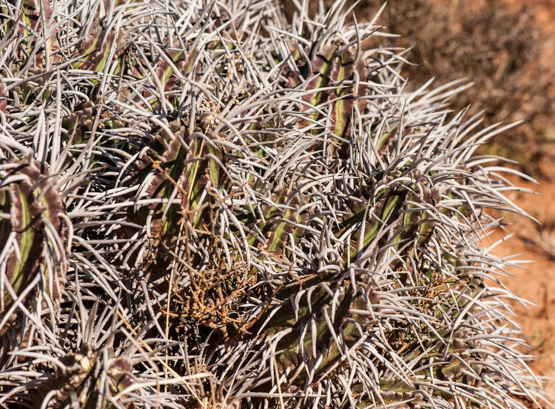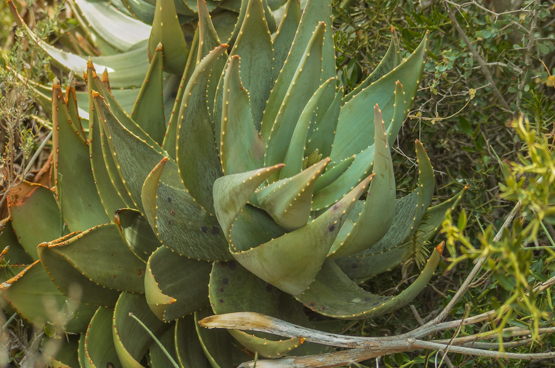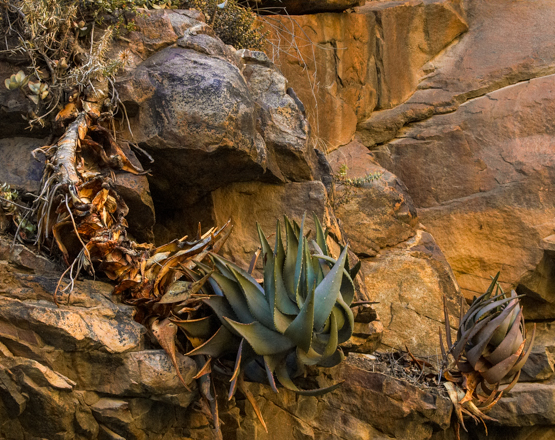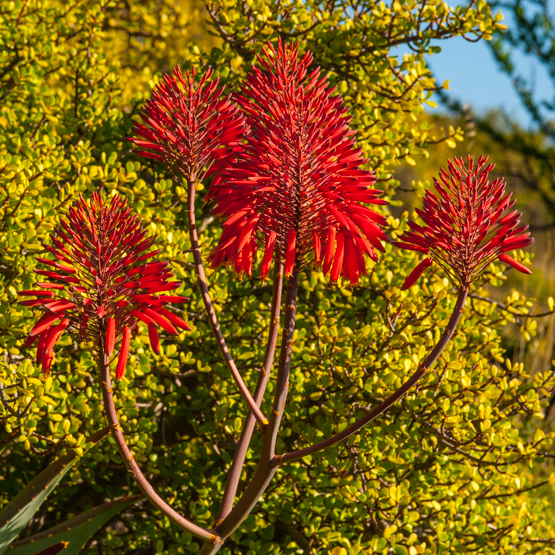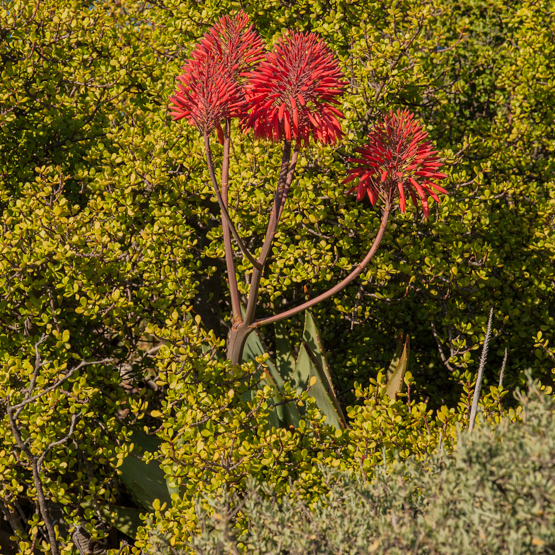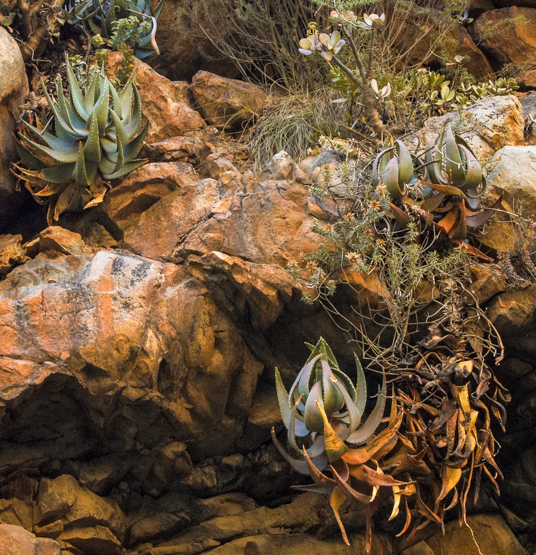In spite of its name, the green to greyish-brown leaves in this species are not always spotted.
The plants are found on high sandstone slopes and outcrops in the Langeberg Mountains, from the Worcester area to north of George and along the Swartberg Mountains from Prince Albert to around Uniondale as well as near Beaufort West.
The horny margin that runs all around the leaf is a useful character to distinguish the species from similar ones, esp. A. triflorus.
Ruschia caroli
In spring (August-September), this is one of the many Mesemb species decorating the countryside with their colourful flowers.
It occurs from my area northwards to Clanwilliam on sandy and clayey soils.
The shrubs are up to 60 cm in height and 80 cm in diameter, with decumbent* grey to reddish branches (* creeping on the ground with the tips curved upwards).
The flowers are 2-2.5 cm across and pink to magenta with a darker midline.
Looking at the pictures you will notice that the last one gives a rather different impression of the flowers. It was taken in the shade and very slightly overexposed. This combination gives a result that I find rather pleasing to the eye.
Senecio longiflorus ssp. longiflorus
With its upright succulent stems this plant may easily be mistaken for a Euphorbia. It is widely distributed from Malawi and Zambia to South Africa, usually growing among rocks or under bushes.
In general the plants become 60-90 cm tall, but they may as much as 1.8 m. The stems are round at first, but later become somewhat angular or even furrowed. They are green, sometimes with a purple tinge, and decorated with groups of three dark green or purple lines. The leaves are rather fleshy but short-lived.
When in seed, the shrubs are a striking sight with their tufts of long white hairs.
Astroloba (Poellnitzia) rubriflora
A while ago I published some pictures of Poellnitzia rubriflora’s beautiful flowers. They were taken in my garden, because it was only last August that I saw this species in the wild for the first time.
The plants occur in a small area between Robertson and Bonnievale (not far from where I live nowadays) on dry stony flats and low hills, usually under bushes. They form low clusters with stems up to 25 cm long.
DNA research seems to indicate that the genus Poellnitzia with its one species belongs in Astroloba, in spite of the rather different flowers.
The accompanying photo were taken 10 August 2014 in the Vrolykheid Nature Reserve near McGregor.
Euphorbia esculenta (2)
Euphorbia esculenta (1)
Of the about 30 species of the so-called medusoid group of Euphorbias, this is one of the biggest, sometimes reaching a metre or even more in diameter (including the branches).
It is very common over a large area stretching from the dry sandy plains east of Addo, northwards as far as Graaff Reinet and southwestwards towards the Baviaanskloof and the eastern border of the Little Karoo.
When the substrate is very hard, the main body is pushed above ground.
The name esculenta means “edible”, because the plants can be used as fodder in times of drought.
The flowers with their white woolly bracteoles give off a pleasantly sweet scent.
Euphorbia ferox (2)
Euphorbia ferox (1)
Plants of this species form clumps up to 15 cm tall and about 60 cm in diameter. The name refers to the armour of strong, usually straight, spines, which may be up to over 3 cm long.
The plants are found on flats and rocky outcrops from the western Great Karoo to Graaff-Reinet and Steytlerville, often in great numbers.
Aloe perfoliata (2)
Aloe perfoliata (1)
In 2000, Glen and Hardy came to the conclusion that Aloe comptonii, A. distans and A. mitriformis were to be united, under the old name A. perfoliata.
This species is most common in the Little Karoo, bur occurs from the Bokkeveld Mountains in the northwest to Genadendal in the south and Uitenhage in the east. The plants are usually found on sandstone or quartzitic outcrops where they often hang down vertical cliffs with stems up to 3 m long. The leaves are bluish-green and up to 25 cm long.
The flowers vary from dull orange-red to bright red and appear from August to February.

